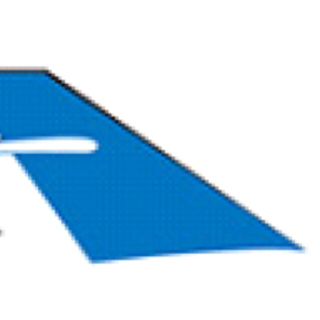Title Page
-
Operator
-
File Number
-
Physical Address
-
Postal Address
-
Postal Code
-
Telephone Number
-
Fax Number
-
Cell Phone Number
-
E-Mail Address
-
Base Of Operations (and as per ASLC)
-
Conducted on
OPERATIONS AUDIT CHECKLIST PART 135 (OFFICE USE)
LICENSE DETAILS
-
Licence(s) Number(s)
-
Class of Air Service:
-
Type of Air Service :
-
Category of Aircraft:
-
Date Application Received
-
Confirmation of payment and date
-
Air Operation Certificate Expiry Date
PREVIOUS FINDINGS
-
LEVEL 1 FINDING
-
LEVEL 2 FINDING
-
LEVEL 3 FINDING
NOTES FOR THIS INSPECTION
-
undefined
INSPECTION AND AUDIT FUNCTIONS
-
CAA inspection and audit functions confirm for CAA that an Operator is operating in compliance with regulatory requirements and Operations Manual (OM). The OM might hold additional standards which the Operator has agreed to uphold.
There will be times when it is not possible or necessary to review or examine 100% of a company’s operation. This is when sampling principles apply.
Inspection and audit checklists have been developed to provide a systematic approach to the inspection of an Operator’s various specialty areas. The checklists are designed to identify specific items within each specialty area and to make reference to applicable regulatory requirements.
Where an Operator fails to comply with these requirements, they will be considered to be in non- compliance and will be required to undertake corrective action.
AUDIT PLANNING
The following should be considered when scheduling an audit:
• The feasibility of the audit dates and time-periods with consideration given to availability of inspectors and the operator.
• The allocation of time for pre-audit activities.
• Team member travel requirements.
• The compiling of the required documentation.
• The contents of the Operator’s ops manual and file should be studied for background knowledge and to detect any shortcomings and anomalies.
PRE-AUDIT MEETING
A pre-audit team meeting is important as it informs team members of the expectations of the team leader. It also provides an opportunity for team members to clear up any questions and gain clarity on their specific roles.
ENTRY MEETING
An entry meeting must be held. It is important in that it establishes communications between the Operator’s- and CAA’s audit team. (See appendix for an agenda).
AUDIT FINDINGS
Audit findings are the foundation of the audit report so it is important that they be completed in accordance with the requirements. An audit finding needs to be recorded on an Audit Finding Report form on which the Operator signs for agreement with the finding.
PARALLEL FINDINGS
Should a shortcoming from the CAA or the need for a correction in procedure or regulation be found, submit a parallel finding on the prescribed from to the line manager.
CLOSING MEETING
The closing meeting is conducted to ensure that the Operator’s senior management have been fully debriefed on the results of the audit. Agreement is also reached on the submission of a corrective action plan by the Operator
ORGANIZATION / MANAGEMENT
-
Is the Operations Manual (OM) up to date with the latest regulations and technical standards?
-
OM amendment number and date as per CAA copy?
-
No hand amendments?
-
Is the OM available in dispatch / flight operations room for consultation and planning?
-
Does the Operator keep amendment record sheet and list of effective pages (LEP) up to date?
-
Are controlled copies of OM current with master copy?
-
POST HOLDERS: Are they current?
-
- Accountable Manager / CEO:
-
- Air Service Safety Officer:
-
- Responsible Person Flight Operations:
-
- Responsible Person Aircraft:
-
- Quality Manager.
-
- Safety Officer.
-
Are their Responsibilities and Functions Defined and Formalised?
-
Acceptance of 6 post holder duties?
-
Does management continually monitor and improve the company safety and quality policy? (Minutes, company memos)
-
Do they ensure that safety and quality objectives are understood and maintained by all personnel?
-
Are periodic management safety and quality meetings and reviews conducted and documented?
-
Are safety and quality concerns, decisions and information distributed by management throughout all relevant personnel and structures of the Operator?
-
Do inputs to the management review include:
-
- Results of audits?
-
- Safety and quality issues/outcomes?
-
- Operational feedback?
-
- Changes in regulatory policy or CAA legislation?
-
- Status of corrective and preventive actions?
-
- Follow –up actions from previous reviews?
-
Waiting area with facilities applicable to operation?
-
Available scale for determining mass of passenger’s, luggage and luggage/ cargo?
-
Air Service Licence available for presentation?
-
Air Operators Certificate and related Operations Specifications available for presentation?
-
Does the operator ensures that his/her aircraft are not registered to more than three AOC’s
-
If the aircraft is on 1 or 2 AOC’s, how does the operator ensures that the aircraft is maintained by one AMO?
-
PUBLICATIONS 91.02.7 Hard copy or electronically available
-
CAR’ & CATS
-
AIP’s
-
Notams, AIC’c, AIP’s supplements
-
Jeppesen/Airad: If specified in OM
-
Flight planning software if specified in OM
-
Do operations personnel and crew have access to operator’s electronic publications if in use?
SAFETY MANAGEMENT SYTEM
-
Has the operator established an SMS
-
Does the Air Service Safety Officer have SMS as part of the ASSO qualification?
-
Is there an Emergency Response Plan (ERP) with clear indication of responsibilities of indicated personnel during transition from normal to emergency to normal operations?
-
Is the ERP co-ordinated with local, remote base and all applicable airports’ emergency facilities?
-
Are ERP contact details regularly updated (with QA audit)?
-
Is the database of hazards and incidents regularly updated and analysed?
-
Are risk management and mitigation applied for each hazard and risk reported as per 2.1.3 (ii) (b)?
-
Are new employees given SMS training as part of induction training?
-
Do the minutes of safety meetings reflect adequate attention to SMS principles and reported hazards?
-
Has any Hazard been filed from last year? What action taken to prevent repeat?
QUALITY MANAGEMENT SYSTEM
-
Terminology
-
a Has the applicant included relevant terminology?
-
Quality Policy and Strategy
-
a Formal policy statement from Accountable Manager?
-
b Explain what the system is intended to achieve?
-
c Cite continued compliance with relevant CAR and AOC holder’s standards?
-
d Does Accountable Manager have overall responsibility for the Quality System?
-
Purpose: Statement that quality system should enable the operator to monitor compliance with:
-
a Relevant sections of the CAR?
-
b Operations, Maintenance Control Manual?
-
c Any other standards established by the AOC holder or CAA?
-
Quality Manager
-
a Do responsibilities include activities that verify:
-
1 Standards required by CAA and the AOC holders are being carried out properly under the supervision of the relevant manager?
-
2 Quality assurance programme is properly established, implemented, maintained and continuously renewed and improved?
-
a Do responsibilities include activities that verify:
-
3 Has access to the Accountable Manager, and all parts of the operator and ant sub-contractor’s organization?
-
b Are the functions of the Quality Manager carried out by different but complementary Quality Assurance programmes?
-
Quality System
-
a Ensure compliance with and adequacy of operational and maintenance activities conducted?
-
b Basic structure specified?
-
c Structured according to the size and complexity of the operation?
-
Scope
Does the scope of the Quality Manual address: -
a Terminology?
-
b The operator’s organisational structure?
-
c Plans and Company Objectives?
-
d The operator’s Quality Policy?
-
e The operator’s additional standards and operating procedures?
-
f Identification of persons responsible for the development, establishment and management of the Quality System?
-
g Documentation (manuals, reports, records)?
-
h Accident Prevention and Flight Safety Programme quality procedures?
-
I The Quality Assurance Programme?
-
J The required financial, material, and human resources?
-
k The training syllabus?
-
l Document control?
-
Feedback System
-
a Corrective action identified and addressed?
-
b Responsible person identified?
-
c Procedure for when corrective action not completed within stated time limit?
-
Document Control
Are procedures developed to ensure documents are: -
a Authorised
-
b Adequate?
-
c Security classified?
-
d In standardised form?
-
e Revised and amended when required?
-
f Appropriately distributed?
-
g Stored?
-
h Periodically reviewed?
-
i Appropriately disposed?
-
Is non-compliance recorded?
-
Are corrective actions developed in response to findings?
-
Corrective actions monitored to verify completion?
-
And to verify effectiveness?
-
9h Corrective Action
Following each quality inspection/audit, is: -
• Immediate need for corrective action established?
-
• Origin of the finding established?
-
• Type of corrective action determined?
-
• Corrective action schedule established?
-
• Individual/department responsible for implementing corrective action identified?
-
• Accountable manager allocating resources where appropriate?
-
9i Is the Quality Manager:
-
• Verifying that the responsible manager takes corrective action?
-
• Monitoring the implementation and completion of corrective action?
-
• Providing management with an independent assessment of corrective action implementation and completion?
-
• Evaluating the effectiveness of corrective action through follow-up?
-
9j Management Evaluation
-
• Process for identification of trends?
-
• Prevention of non-conformities?
-
• Does the Accountable Manager determine frequency, format and structure of management evaluation activities?
-
9k Recording: Process established for retaining the following records for 5 years:
-
• Audit schedules?
-
• Quality inspection and audit reports?
-
• Responses to findings?
-
• Corrective action reports?
-
• Follow-up and closure reports?
-
• Management evaluation reports?
-
Quality Assurance Responsibility For Sub-Contractors
-
a Are any of the AOC holders’ activities contracted out to external agencies?
-
b Does a written agreement exist between the AOC holder and the sub-contractor?
-
c Are the sub-contractor’s safety related activities included in the AOC holder’s quality assurance programme?
-
Quality System Training
For those responsible for managing the quality system, does training cover: -
a An introduction to the quality system concept?
-
b Quality management?
-
c Concept of quality assurance?
-
d Quality manuals?
-
e Audit techniques?
-
f Reporting and recording?
-
g The way the quality system will function in the company?
-
For those not responsible for managing the quality system, does training cover:
-
a A briefing on the way the quality system will function in the company?
STANDARD OPERATIONG PROCEDURES (SOP)
-
Has the operator compiled SOPs for each aeroplane type being operated?
-
Has the operator provide portions of the SOPs to employees
-
Are the SOPs a stand-alone document or part of the manual
-
How does the operator ensures that the SOPs are accessible to flight crew during flight time and are current?
-
Are the SOPs or the AOM in an electronic format and easily accessible during flight time?
-
Are air crew monitored for use of current flight planning aids i.e. publications, manuals, computer software, charts?
-
Are crews adequately briefed and supplied with sufficient information for conducting flights to the Operators’ requirements?
-
Are passengers under guidance when boarding & disembarking from flights?
-
Does the operator have an approved / accepted AFM for each aircraft?
-
Flight Followers:
-
Does the Operator have sufficient flight followers?
-
Are the flight followers trained accordingly to subpart 3?
-
Flight time and duty period scheme: CARS 135.02.9
-
Has the operator established a scheme for the regulation of FDP, rest periods and days free of duty?
-
Is the scheme part of the manual?
-
Does flight & duty time get monitored, including restriction of other duties and access to freelance crew records?
-
Are required days off monitored and allowed? (1 day off after 7, 2 days off within fourteen)
-
Does the operator maintain FDP records of all flight crew? Records kept for 15 months
-
Are operations personnel at hand before departures to adequately brief crew on flight details?
-
Documentation: Flight Folios (CATS 91.03.5)
-
All aspects recorded as per CATS91.03.5?
-
Signed by captain?
-
Are recorded defects communicated to operations and maintenance personnel before a next flight?
-
Defects recorded and signed off if rectified?
-
If not required as per MEL, are they deferred?
-
Defects same in office and aircraft copies?
-
Flight planning and documentation:
-
Operational Flight Plan; details as per CATS 135.04.5
-
Fuel required calculation as per 135.07.9 &10
-
Alternates considered for take-off, en-route and destination and planned for?
-
Flight planning and documentation:
-
Are performance and operating limitations taken into account as per 135.07.1, 135.07.5, 135.07.6?
-
In flight fuel recalculation, fuel checks done and available fuel left adequate for alternate? CAR 135.07.10
-
Is take-off fuel recorded to enable en-route monitoring?
-
Is fuel consumption monitored? (In flight and flight returns)
-
Are actual fuel consumption figures considered during pre-flight fuel calculations?
-
Are re-fuelling procedures monitored by the Operator?
-
Load and trim sheet (L&T): CATS 135.04.9 signed by captain?
-
Compare aircraft weight on load & trim sheet same as per aircraft weight & balance doc?
-
Compare fuel load as per fuel request and flight folio?
-
Passenger / cargo manifest compare with load & trim sheet?
-
Standard passenger and crew weights used as per OM?
-
Is passenger service items and supplies included in L&T sheet?
-
Check documents to be carried on board and to stay on the ground?
-
For flights from away bases are documents forwarded to main base of operations? Hard or Electronic
-
Operational flight plan, load & trim sheet, passenger/carg0 manifest, relevant part of flight folio, special load notification and general declaration kept for 90 days?
AIRCRAFT DOCUMENTATION
-
CHECK AIRCRAFT RECORDS SPREADSHEET FOR ALL REQUIREMENTS
AIR CREW RECORDS AND TRAINING
-
CHECK FLIGHT CREW RECORDS SPREADSHEET FOR ADDITIONAL REQUIREMENTS
FLIGHT CREW TRAINING RECORDS FOR EACH EMPLOYEE
-
Do flight crew receive operator’s induction training before conducting flights?
-
Are SMS and QA requirements part of inductions training?
-
Conversion training: CAR135.03.1/2 Check Operator retains copies of type conversion training if done by operator?
-
Are 12 monthly Operator’s recurrent training and checking done as per 135.03.7 and as specified in the OM?
-
Are 6 monthly Operators Proficiency Checks (OPC) done as per CAR135.03.7 and OM (checklist)?
-
Are Instrument Rating renewals done by a CAA approved DFE?
-
If recurrent training and checking is done in conjunction with an IR renewal, does the training and checking get recorded separately?
-
Is safety and emergency procedure training included in recurrent training and OPC check forms?
-
Are the OM, CAR and AIC/AIP etc. currency included in the recurrent training and checking and OPC’s?
-
Does Operator have records of simulator training and simulator certification where applicable?
-
Do all flight crew meet minimum experience requirements as per Operations Manual? 135.02.1
-
Is CRM and DG training done by accredited ATO’s?
-
Are the copies of documents kept in Operator training files of flight crew currently utilised up to date?
-
Are records of flight crew no longer utilised kept for the required period?
-
Do flight crew receive operator’s induction training before conducting flights?
-
Are SMS and QA requirements part of inductions training?
-
Conversion training: CAR135.03.1/2 Check Operator retains copies of type conversion training if done by operator?
-
Are 12 monthly Operator’s recurrent training and checking done as per 135.03.7 and as specified in the OM?
TRAINING AND CHECKING
-
Does the Operator have an approved training and checking programme?
-
Do the facilities meet the requirements as per 135.03.3 (a) (b)
-
Does the Operator keep records of written exams, comprehension on assessment and skills test 135.3.4 (b)
-
Does the Operator conduct training for another organization?
-
Is the training scheme limited to 135.03.1 (2) (a) (b) (c)
-
Is the training scheme for operator employees only?
-
Is the training scheme for ground and flight training as per 135.03.3 (1) (a – f) and (2) (a – l)
POLICIES AND PROCEDURES
-
Does the Operator ensure that Operations policies and procedures are appropriately and consistently applied?
-
Is there a policy regarding procedure violations should flight crew and other personnel consistently not comply with procedures?
-
Are take-off minima procedures applied? (See also Low Visibility Procedures (LVP’s)
-
Is there a policy regarding the use and suitability of alternates for T/O and Destination?
-
Do the Operators monitor compliance with AWOPS, ETOPS, ACAS, RVSM etc.?
-
Are there sufficient procedures and practises in place to ensure safe visual and instrument approaches?
-
Are there non-precision approach procedures?
-
Are all significant aircraft performance factors such as wt., alt, temp, r/way gradient and contamination considered?
-
Does the Operator ensure that en-route, multi-engine aircraft are still able to continue and remain above safe altitudes and minimum levels should engine failure occur? (Vmcse) as per subpart 7
-
Has the operator established a fuel policy?
OPERATIONS AUDIT CHECKLIST PART 135 (OFFICE USE) Cont.
-
Tap "+"
-
AIRCRAFT ON AOC
-
Registration
-
Type
-
Owner
-
AMO
-
Aircraft category
-
Lease Agree
-
No of Seats
-
3rd Party liability
-
Insured Amount R1m/seat
-
Cert. of registration
-
DATE OF EXPIRY
-
Radio License
-
Release to Service
-
Cert. of Airworthiness
-
Weight and Balance
-
Category A1 - Any aircraft, excluding a helicopter, with a maximum certificated mass exceeding 20 000 kilograms
Category A2 - Any aircraft, excluding a helicopter, with a maximum certificated mass exceeding 5 700 kilograms but not exceeding 20 000 kilograms
Category A3 - Any aircraft, excluding a helicopter, with a maximum certificated mass exceeding 2 700 kilograms but not exceeding 5 700 kilograms
Category A4 - Any aircraft, excluding a helicopter, with a maximum certificated mass of 2 700 kilograms or less -
Tap "+"
Pilot
-
PILOT RECORDS:
-
Name
-
CPL or ATPL
-
License Number
-
DATE OF EXPIRY
-
Medical
-
RVSM certificate
-
Instrument Rating
-
Proficiency check
-
Dangerous Goods
-
CRM
CONCLUSIONS: FINDINGS AND OBSERVATIONS
-
LEVEL 1 FINDING (Constitutes non-compliance which necessitates the exercising of immediate discretionary enforcement action/powers vested in the inspectors, authorized officers and/or authorized persons in the interest of safeguarding aviation safety)
-
LEVEL 2 FINDING (Constitutes non-compliance requiring the client to develop action plans with time frames and coupled with a follow-up inspection to verify rectification of the non-compliance)
-
LEVEL 3 FINDING (Constitutes non-compliance which is left to the client to rectify and which will not necessitate a follow-up inspection but which can be followed up at the next inspection. The client is required to notify the CAA when the rectification has been effected within an agreed timeframe.)
OBSERVATIONS
-
undefined
OPERATOR’S CORRECTIVE ACTION PLAN
-
undefined
DEBRIEF TO OPERATOR REPERSENTATIVES FROM AUDIT MANAGER
-
Operator Representatives
-
CAA Audit Team
COMMENTS MADE BY THE AUDIT MANAGER TO THE OPERATOR’S REPRESENTATIVES
-
Operations
-
Training
-
Administration
-
Documentation
-
Recommendations
-
NAME and SIGNATURE OF FOD INSPECTOR
-
I was de-briefed on the inspection/audit, have read and accept*/do not accept* the findings and observations of the flight operations inspector/s and have received a copy of the report. <br>*Select below
-
NAME and SIGNATURE OF OPERATOR’S REPRESENTATIVE
ATTENDANCE REGISTER
-
CAA & OPERATOR REPRESENTATIVES
-
PURPOSE OF MEETING
-
CHAIRPERSON / PRESENTER
-
DATE:
-
Tap "+"
Attendee
-
ATTENDEE INITIALS & SURNAME
-
SECTION
-
SIGNATURE


















